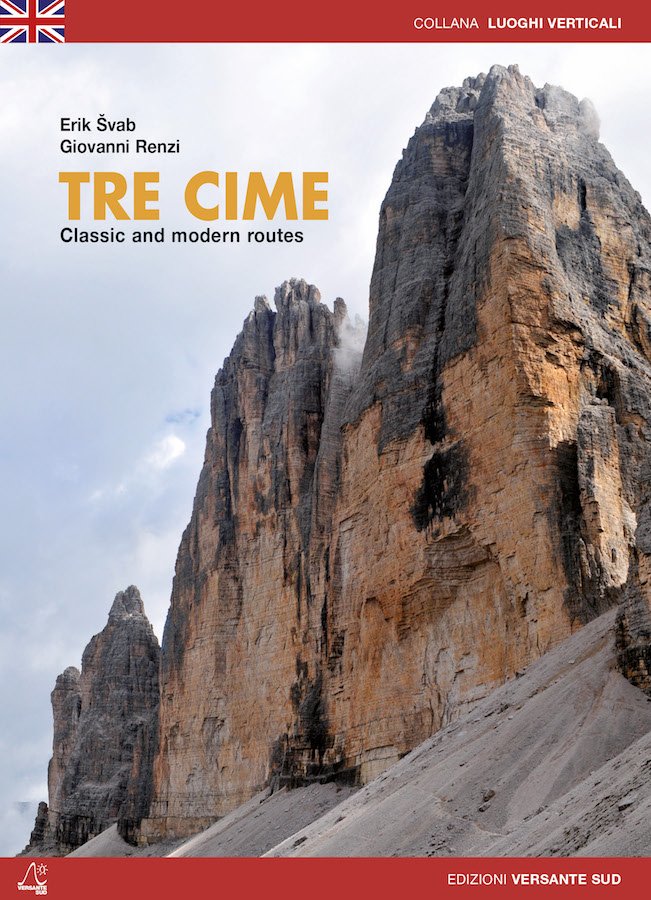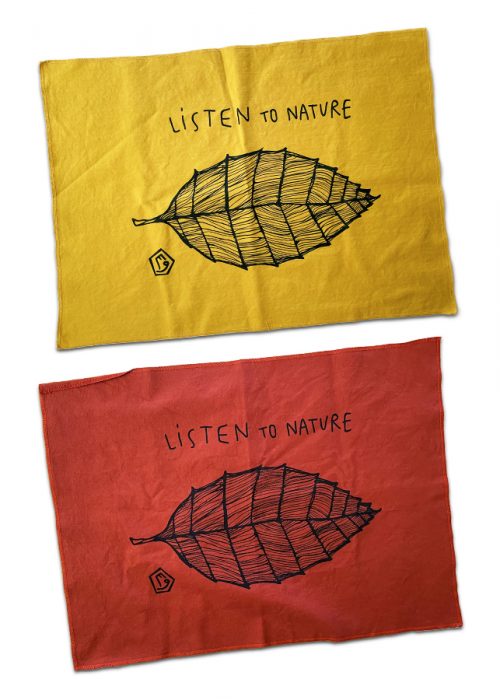TRE CIME
Classic and modern routes
The Tre Cime di Lavaredo are some of the most iconic peaks in the Dolomites. The overall importance of this trio, their somber and tall cliffs, their slender pinnacles have always fostered an incredible fascination and an unconditional deference.
The walls are very steep, often overhanging, and they require ease with climbing on loose terrain, experience and mental stamina.
Since the very beginning of mountaineering they have been a top destination for the most renowned climbers: many of them left a trace of their visit, establishing new routes, first repetitions, winter ascents, solo attempts, concatenations.
The guidebooks reviews more than 100 routes: besides the classic ones, all the free-climbing options are described in detail, including the “older” aid-climbing ones. Many of them have been repeated by the Authors themselves, who are both proficient climbers and mountaineers.
This work arises as well from the wish of preserving the legacy especially of the most demanding and lest known routes: thus, we will contribute not only to promoting this stunning massif, but as well to safeguarding its environment and preventing the risk of “overbolting” by ill-advised climbers.
From the foreword by Christoph Hainz
It is obvious that a separate guide will be dedicated to the Three Peaks, as they are the stars among the Dolomite peaks.
In addition, there are now so many climbed lines through these massive monumental rocks that you can easily fill a book with them. Hardly anywhere else can you find such a density of grandiose routes with all difficulties as here.
(…) 140 years ago, on August 21, 1869, the Viennese Paul Grohmann and the leaders Franz Innerkofler and Peter Salcher stood on the first and highest of the pinnacles. The successful trio may hardly have been aware of what would follow their pioneering work. An international run (rush) began on the stone fortress, which is looking like a calf.
In the late nineties, Kurt Astner and myself, two South Tyroleans, took part in the development of the area for the first time. We lay challenging routes in the north faces of the large and western faces as well as in the south face of the small ones, which soon turned out to be classics for free climbers. A little later, Mauro? Bubu “made Bole sit up and take notice with the free ascent of some techno routes, while Alexander Huber raised the bar breathtakingly high with the first alpine 911 route” Bellavista “. A fresh wind blew through the mighty walls again, they became once again a magnet for the best climbers from all over the world.
(…) So I wish all users of this guide unique experiences, the right level of self-assessment and respect for the mountain, but above all a lot of fun climbing the fantastic triumvirate.
From the foreword by Alex Huber
In the course of my life as a mountaineer, I have now seen almost all the mountains on earth. Big mountains, small mountains. High walls, steep walls. Made of rock, of ice. All mountains have something nice for me, but there are also special mountains. The K2, the Cerro Torre, the El Capitan, the Montblanc and the Matterhorn – these are the coveted stars in the sea of peaks: and the Three Peaks are one of them. In the midst of the incomparable rocky landscape of the Dolomites, with their mercilessly steep north faces they embody the Dolomite climbing par excellence.
Thomas and I were born into a family who loved mountain sports. We children are also kidnapped into the world of the mountains from early childhood. Above all, our father, who himself climbed each of the great classical walls of the Alps in his own life, is to blame for our vertical search. When I was fifteen I climbed the Yellow Edge and the Comici for the first time and instinctively I knew even then that I would climb the battlements more often.
Indeed, there are no other mountains that I have returned to so often. More than any other wall, the battlements always presented me with new challenges. Whether five walls in one day, whether Free Solo or the Great Roof of the Western S The battlements are still the measure of all things today! And they will be in the future too!
Have fun with the vertical adventure!
Erik Švab born in 1970, resident in Trieste, married with two children, dedicates himself to mountaineering at 360 degrees: sport climbing, classic and modern routes, routes with traditional and solo protections, competitions, new routes, ice falls, dry-tooling , ice and mixed routes, expeditions. In twenty years of mountaineering he has made more than 500 ascents in the mountains.
He collaborates with the media and organizes evenings with the public, a member of the Slovenian minority in Italy, he speaks seven languages.
He is an honorary member of the Italian Academic Alpine Club. Since he became a father, his greatest achievement has been to reconcile high-level mountaineering with family life and career. He tries it by making climbs around the Alps and in Europe, both in summer and in winter.
Giovanni Renzi, born in 1966, lives in Bellaria (Rimini) where he works as a company manager. He began climbing in 1983 at the Badolo crag and in 1995 he became a National Free Climbing Instructor. He is an assiduous enhancer of the cliffs of the Marecchia valley (www.valmarecchia.it) on which he has equipped about 250 single pitches then collected in the guides Climbing in Valmarecchia (2000), Valmarecchia Verticale (2005) and Verucchio (2008). In 2001 he set up the Valmarecchia Climbing School with which he manages an indoor gym in the province of Rimini. In the Dolomites he has about 200 classic and modern climbs to his credit, of which 30 in Lavaredo. He has visited 300 crags in Italy and Europe climbing single pitches up to 7c on sight and 8a + worked.
| Year: | 2009 |
|---|---|
| ISBN: | 978-88-87890-88-4 |
| Pages: | 180 |
| Dimensions: | 15,00 × 21,00 cm |
| Weight: | 380g |
| Code: | LV36/1 |




